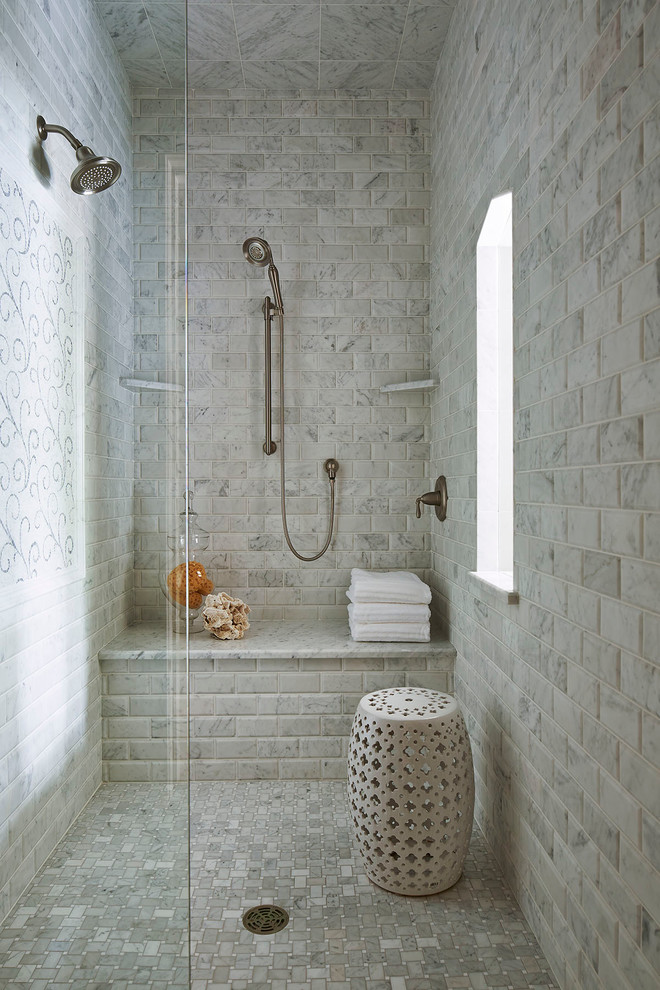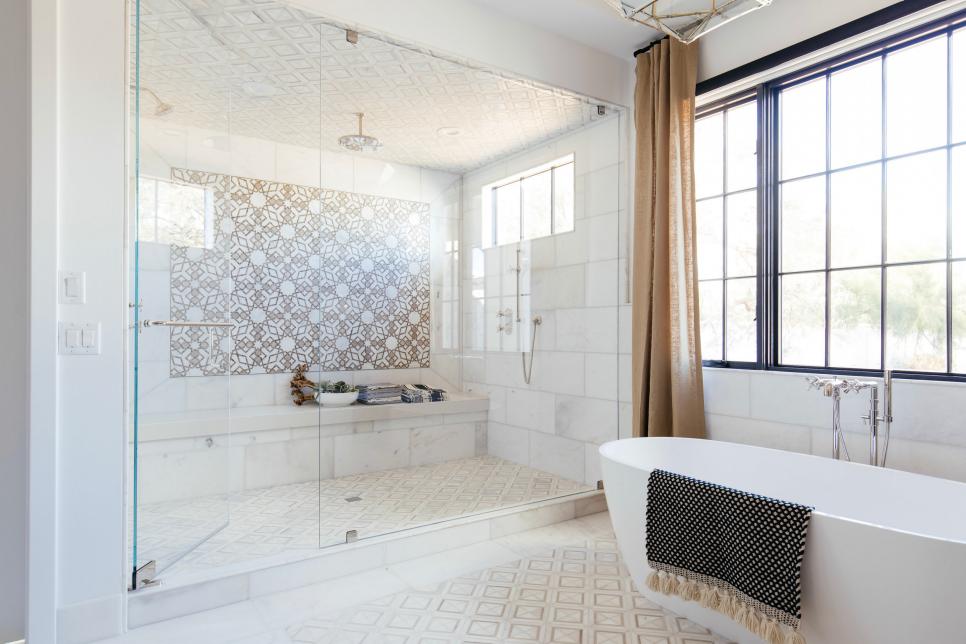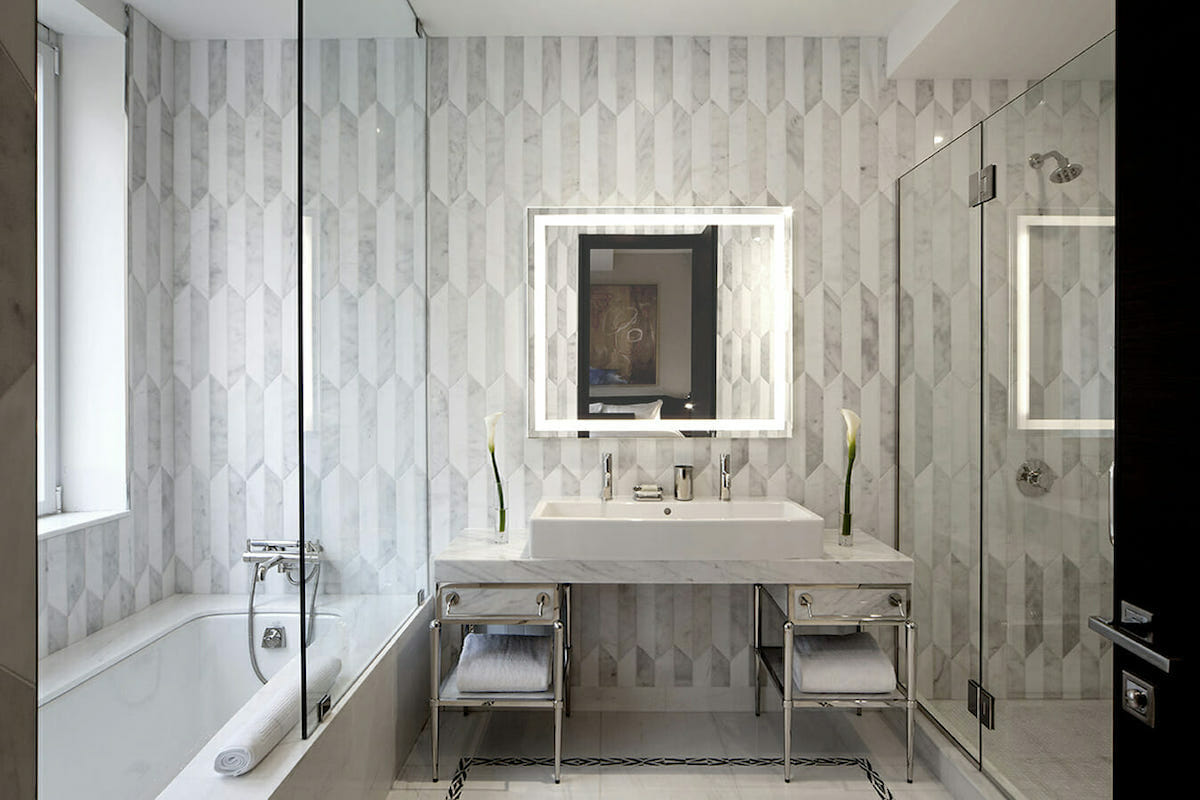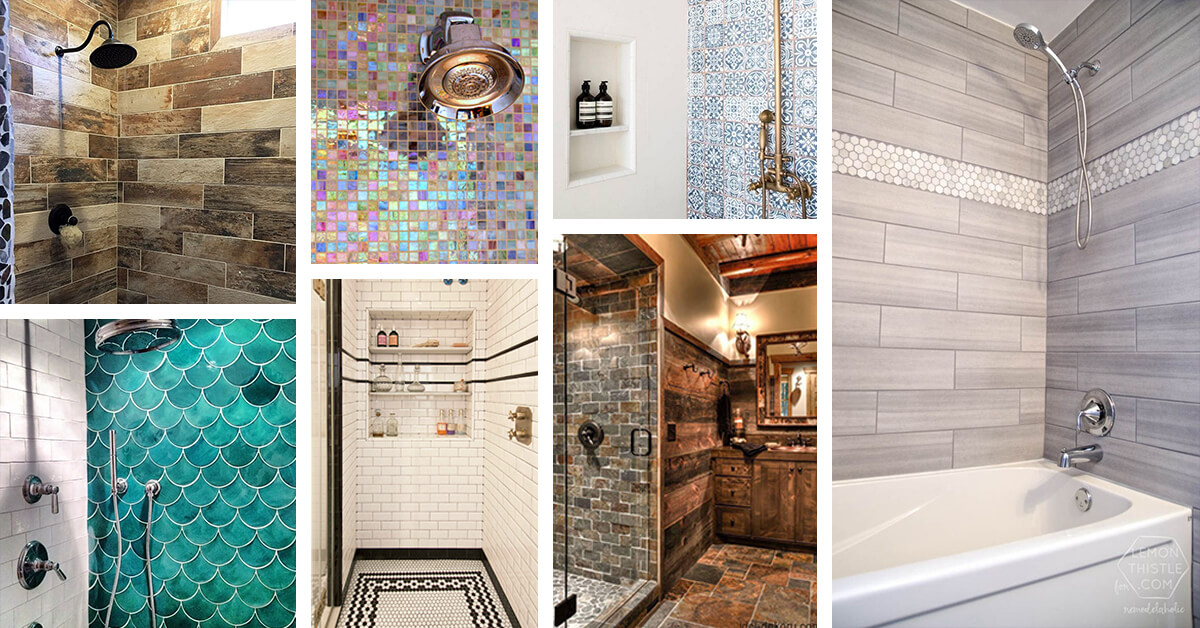Modern Trends in Bathroom Tile Designs for Showers
Bathroom tile designs for showers have evolved significantly over the years, reflecting changing tastes, technologies, and design preferences. Here are some modern trends to consider when revamping your shower:
- Large Format Tiles: Large format tiles continue to dominate modern bathroom designs, offering a sleek and seamless look with fewer grout lines. These oversized tiles create a sense of spaciousness and luxury, making them ideal for contemporary shower spaces.
- Natural Stone Finishes: Natural stone tiles, such as marble, travertine, and slate, add a touch of elegance and sophistication to shower designs. Their unique veining and texture create visual interest and bring a sense of the outdoors into the bathroom, making them a popular choice among homeowners seeking a spa-like ambiance.
- Textured Tiles: Textured tiles are gaining popularity for their ability to add depth and dimension to shower walls. From subtly embossed patterns to more pronounced relief designs, textured tiles create visual intrigue and enhance the tactile experience of showering.
- Geometric Patterns: Geometric patterns, such as hexagons, chevron, and arabesque, are making a comeback in bathroom tile designs. These bold and eye-catching patterns add personality and visual impact to shower walls, infusing the space with personality and style.
- Matte Finishes: Matte-finish tiles offer a contemporary alternative to glossy surfaces, providing a soft, understated look that complements modern bathroom aesthetics. Matte tiles are also less prone to showing water spots and fingerprints, making them an excellent choice for high-traffic shower areas.
- Monochromatic Color Schemes: Monochromatic color schemes, featuring shades of gray, white, and black, create a timeless and sophisticated look in shower designs. These neutral palettes provide a versatile backdrop for experimenting with different textures, finishes, and accents.

Choosing the Right Shower Tile Material for Your Bathroom
Selecting the right shower tile material is crucial for achieving both aesthetic appeal and practical functionality in your bathroom. Here’s a closer look at some popular shower tile materials and their unique characteristics:
Ceramic: Ceramic tiles are a budget-friendly option for shower walls, offering a wide range of colors, patterns, and finishes to suit any design style. They are durable, easy to clean, and resistant to water and stains, making them a practical choice for shower enclosures.
Porcelain: Porcelain tiles are renowned for their strength, durability, and low porosity, making them ideal for wet areas like showers. They come in a variety of finishes, including matte, glossy, and textured, and can mimic the look of natural stone or wood with remarkable realism.
Natural Stone: Natural stone tiles, such as marble, granite, and travertine, bring a sense of luxury and elegance to shower designs. Each piece is unique, with variations in color, veining, and texture that add character and charm to the space. However, natural stone requires regular sealing to prevent water damage and staining.
Glass: Glass tiles are prized for their luminous beauty and reflective properties, adding sparkle and sophistication to shower walls. They come in a variety of colors, shapes, and finishes, from glossy to frosted, and can be used to create stunning accent walls or mosaic patterns.
Mosaic: Mosaic tiles, typically made of glass, ceramic, or natural stone, are small, individual pieces assembled to form intricate patterns or designs. They offer endless creative possibilities for shower walls, allowing you to add visual interest and personality to the space.
Concrete: Concrete tiles are a popular choice for modern, industrial-inspired bathrooms, thanks to their raw, minimalist aesthetic. They are durable, versatile, and available in a range of colors and finishes, including polished, matte, and textured, offering a contemporary alternative to traditional shower materials.
Creative Patterns and Layouts for Shower Tile Designs
When it comes to shower tile designs, the pattern and layout play a crucial role in defining the overall look and feel of the space. Here are some creative patterns and layouts to consider for your shower:
Subway Tile: Subway tile is a classic choice for shower walls, known for its timeless appeal and versatility. Install the tiles in a traditional running bond pattern for a clean, linear look, or mix things up with a herringbone or vertical stack pattern for added visual interest.
Basketweave: The basketweave pattern features interlocking rectangular tiles arranged in a woven pattern, creating a striking visual effect reminiscent of a woven basket. This timeless pattern adds texture and dimension to shower walls, making it a popular choice for both traditional and contemporary bathrooms.
Chevron: Chevron tile patterns consist of V-shaped tiles arranged in a zigzag pattern, creating a dynamic and visually engaging design. Install chevron tiles vertically for a modern, graphic look or horizontally for a more traditional aesthetic.
Hexagon: Hexagon tiles offer a fresh and contemporary take on shower tile designs, with their geometric shape adding a touch of whimsy and personality to the space. Arrange hexagon tiles in a uniform grid for a sleek, modern look, or mix different colors and finishes to create a unique mosaic effect.
Diagonal: Diagonal tile layouts involve installing tiles at a 45-degree angle to the walls, creating a dynamic and visually striking effect. This diagonal orientation adds a sense of movement and energy to shower walls, making the space feel more spacious and inviting.
Random Mix: For a playful and eclectic look, consider mixing different tile shapes, sizes, and colors to create a unique mosaic or patchwork effect. This random mix of tiles adds character and personality to shower walls, allowing you to showcase your creativity and individual style.
Enhancing Shower Tile Designs with Accent Tiles and Borders
Accent tiles and borders are excellent ways to add visual interest and personality to shower tile designs, creating focal points and defining the space. Here are some ideas for enhancing your shower tile designs with accent tiles and borders:
Contrasting Colors: Use accent tiles in contrasting colors to create eye-catching focal points in the shower. For example, pair neutral subway tiles with bold, colorful accent tiles in shades of blue, green, or red to add a pop of color and personality to the space.
Metallic Finishes: Metallic accent tiles, such as stainless steel, copper, or brass, add a touch of glamour and sophistication to shower walls. Install metallic tiles as borders or inserts to create subtle shimmer and shine, elevating the overall look of the space.
Glass Mosaics: Glass mosaic tiles are perfect for adding depth and dimension to shower designs, thanks to their translucent properties and reflective surfaces. Use glass mosaic tiles as accents or borders to create intricate patterns or designs that catch the light and sparkle beautifully.
Natural Stone Accents: Incorporate natural stone accent tiles, such as marble, travertine, or slate, to add texture and warmth to shower walls. Pair them with complementary stone tiles or ceramic tiles for a cohesive look that brings the beauty of the outdoors into the bathroom.
Patterned Inserts: Introduce patterned inserts or medallions into your shower tile design to create visual interest and focal points. Choose intricate patterns or designs that reflect your style and preferences, whether it’s floral motifs, geometric shapes, or Moroccan-inspired motifs.
Border Tiles: Border tiles, whether in a contrasting color, material, or shape, can frame the shower enclosure and add a polished finishing touch to the design. Install border tiles along the edges of the shower walls or as decorative bands to create a cohesive and cohesive look.
Tips for Selecting Grout Colors to Complement Your Shower Tiles
Grout may seem like a minor detail, but it plays a significant role in the overall look and durability of your shower tile design. Here are some tips for selecting grout colors to complement your shower tiles:
Match the Grout to the Tile: For a seamless and cohesive look, choose grout colors that closely match the color of your tiles. This creates a unified appearance where the tiles are the focal point, and the grout blends into the background.
Go Darker for Contrast: If you want to create contrast and make your tiles stand out, opt for a grout color that is slightly darker than the tiles. This adds depth and definition to the tile layout, making each tile pop and enhancing the overall visual impact of the design.
Consider Neutral Tones: Neutral grout colors, such as gray, beige, or taupe, are versatile options that complement a wide range of tile colors and styles. They provide a subtle backdrop for the tiles while allowing them to shine, making them an excellent choice for most shower designs.
Use White for a Clean Look: White grout is a classic choice for shower tile designs, especially in modern and minimalist bathrooms. It creates a clean, fresh look that brightens up the space and highlights the beauty of the tiles without overpowering them.
Experiment with Contrasting Colors: For a bold and dramatic effect, consider using contrasting grout colors to make a statement. Pair light-colored tiles with dark grout or vice versa to create visual interest and add a touch of personality to your shower design.
Take Tile Size into Account: The size of your tiles can influence the choice of grout color. For smaller tiles, such as mosaic or subway tiles, opt for a grout color that matches the tiles to create a seamless, unified look. For larger tiles, you can experiment with contrasting grout colors to highlight the tile edges and create visual texture.
Maintenance and Cleaning Tips
Proper maintenance and cleaning are essential for preserving the beauty and longevity of your shower tile designs. Here are some tips to keep your shower tiles looking their best:
Regular Cleaning: Clean your shower tiles regularly to prevent the buildup of soap scum, mildew, and grime. Use a mild detergent or tile cleaner and a soft brush or sponge to scrub the tiles gently, paying attention to grout lines and hard-to-reach areas.
Avoid Harsh Cleaners: Avoid using harsh chemical cleaners or abrasive scrubbers, as they can damage the tiles and grout over time. Instead, opt for mild, pH-neutral cleaners that are safe for use on tile surfaces.
Seal Grout Lines: Seal the grout lines periodically to protect them from moisture, stains, and discoloration. Apply a high-quality grout sealer according to the manufacturer’s instructions, focusing on the grout lines between the tiles to create a waterproof barrier.
Prevent Mold and Mildew: Keep your shower tiles clean and dry to prevent the growth of mold and mildew. Use a squeegee or towel to wipe down the tiles after each use, and ensure proper ventilation in the bathroom to allow moisture to escape.
Address Stains Promptly: Deal with stains and spills promptly to prevent them from setting into the tiles or grout. Blot up spills immediately with a clean, dry cloth, and treat stains with a gentle cleaning solution or stain remover as soon as possible.
Avoid Hard Water Deposits: Hard water can leave unsightly mineral deposits on shower tiles, so it’s essential to prevent buildup by using a water softener or installing a shower filter. You can also remove existing deposits with vinegar and water or a commercial descaler.
Cool And Eye-Catchy Bathroom Shower Tile Ideas
Best Shower Tile Ideas and Designs for 2024
Best Shower Tile Ideas (2024 Designs)
Best Subway Tile Bathroom Designs in 2024
Bathroom Shower Tile Ideas
Bathroom Tile Ideas
Best Shower Tile Ideas and Designs for 2024
Related Posts:










